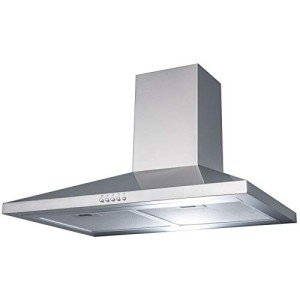In the domain of home enhancement and ventilation, modern extractor fans stand out as indispensable devices. With their capability to get rid of wetness, odors, and other toxins, these fans contribute considerably to indoor air quality and overall comfort. Whether installed in restrooms, kitchens, or other areas needing ventilation, modern extractor fans are developed to be efficient, trendy, and quiet. This post will check out the different aspects of modern extractor fans, including their types, benefits, installation, and maintenance.
| Feature | Details |
|---|---|
| Purpose | Eliminates wetness, smells, and air-borne toxins |
| Types | Ceiling-mounted, wall-mounted, inline, ducted, and window fans |
| Sound Level | Varieties from quiet operation to louder units |
| Energy Efficiency | Units available with Energy Star rankings |
| Smart Technology | WiFi-enabled designs, sensors, and auto-lights |
Still relatively underappreciated, extractor fans play a vital function in keeping a healthy indoor environment. They help to manage humidity levels, managing condensation that can lead to mold growth. With enhanced air circulation, extractor fans add to a fresher and more enjoyable environment.
Modern extractor fans can be found in various types, each developed for particular applications and environments:
| Type | Description |
|---|---|
| Ceiling-mounted | Set up on ceilings, frequently used in bathrooms or kitchens |
| Wall-mounted | Placed on walls, perfect for smaller areas |
| Inline | Ducted fans installed within the ceiling or wall cavities |
| Ducted | Linked to ductwork, providing fresh air to several rooms |
| Window fans | Installed in windows, pulling in fresh air or expelling stagnant air |
When picking an extractor fan for your space, a number of factors should be considered:
Q1: How do I preserve my extractor fan?A1: Regular upkeep includes cleaning up the fan blades, looking for dust accumulation, and guaranteeing that the motor is functioning correctly. An extensive examination should be done a minimum of as soon as a year.
Q2: Can extractor fans be utilized in kitchens?A2: Yes, extractor fans are typically utilized in kitchens to eliminate cooking odors, wetness, and heat. It's vital to pick a model that can deal with the kitchen's specific ventilation needs.
Q3: What is the distinction between an extractor fan and an exhaust fan?A3: Extractor fans usually concentrate on getting rid of moisture and smells from areas like restrooms, while exhaust fans are utilized in kitchens to aerate smoke and heat.
Q4: How do I know the ideal size fan for my bathroom?A4: An excellent general rule is to choose a fan with a CFM ranking that matches the space's square footage. Generally, a restroom fan must offer 1 CFM per square foot of space.
Q5: Do modern extractor fans take in a lot of energy?A5: Modern extractor fans are created to be energy-efficient. When trying to find a fan, think about models with Energy Star scores and low sone levels for optimal performance without high energy expenses.
Installing a modern extractor fan can vary in intricacy based on the kind of fan and location. Here is a streamlined guide:
The modern extractor fan is an important component for any home or business space. Its multifunctional abilities exceed easy ventilation; they play a critical role in health, comfort, and energy performance. By comprehending the different types, benefits, and selection criteria for these fans, consumers can make educated decisions to improve their indoor environments. With the ideal choice and proper upkeep, modern extractor fans can cause a fresher, cleaner, and much healthier environment for several years to come.

No Data Found!
